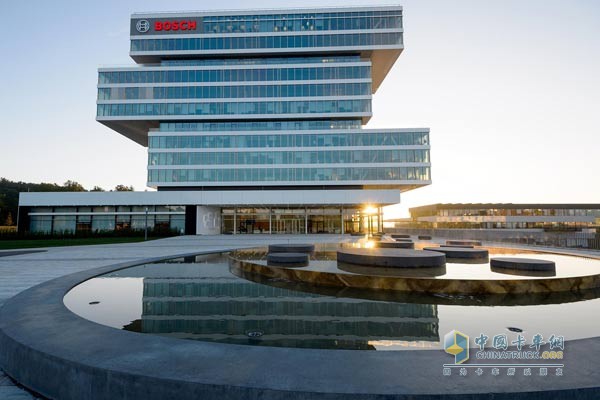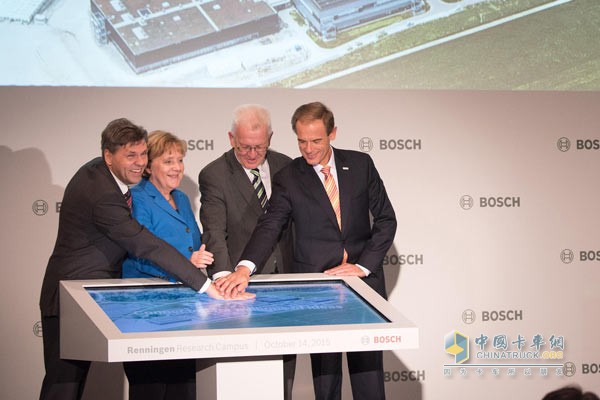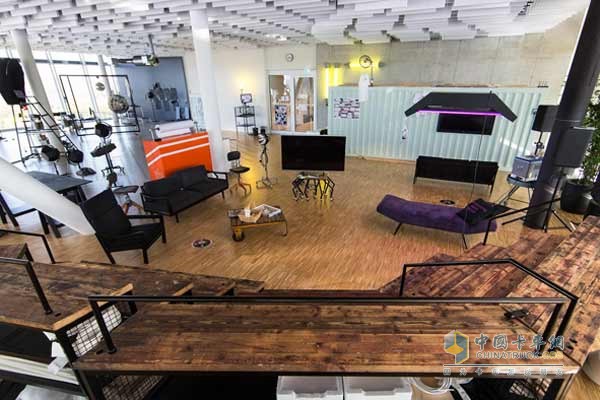In order to encourage interdisciplinary cooperation and further enhance its innovative strength, Bosch Group announced today the opening of the Bosch Academia Sinica in Reingen, Germany. The base provides a new working environment for innovative talents. This R&D and Advanced Engineering Technology Center is located on the outskirts of Stuttgart and has nearly 1,700 innovative talents dedicated to industrial research applications. The people invited to attend the opening ceremony included Merkel, Chancellor of the Federal Republic of Germany, Winfried Kretschmann, Governor of Baden-Württemberg, and representatives from political, business and academia in Germany. Dr. Volkermar Dunner, Chairman of the Board of Bosch Group, said in his speech, “The Bosch Central Research Institute is like a university where many professional and technical talents are gathered. Here, I hope our researchers will not only have Forward-looking prospects should also shape themselves as successful entrepreneurs. The Renningen Academia Sinica is Bosch's own "Stanford." At the same time, it will also show that Germany is the cradle of technological innovation."

Bosch Central Research Institute main building
The Bosch Group's investment in the new institute amounts to 310 million euros. With the aim of “brainstorming and integrating,†Bosch Central Research Institute is also the center of Bosch's global R&D network. Bosch also hopes to encourage and strengthen entrepreneurship in the Academia Sinica. In view of Germany's weak entrepreneurial links, Dunner pointed out that “In Germany, people have neither the opportunity nor the willingness to start a company. This is especially true for young university graduates. Therefore, we need to cultivate entrepreneurship! What universities need to do is not It should only be to train students to pass exams in the professional field."

(From left) Dr. Michael-Bolle, President of Bosch Group R&D and Advanced Engineering, German Chancellor Angela Merkel, Governor of Baden-Württemberg Winfried-Kretschmann, and Dr. Volkermar Dunner, Chairman of the Bosch Group ceremony
Technological Innovation Makes Life's Beauty
We expect that in the future, Bosch Academia Sinica will be able to achieve more technological innovations that will improve living standards. Currently, the Renningen Institute brings together talents skilled in different fields. The related disciplines include electrical engineering, mechanical engineering, computer science, mathematical analysis, chemistry, physics, biology, and microsystems technology, and corporate R&D and advanced engineering technologies. It has 1,200 employees and 500 doctoral students and interns working on future technical challenges and challenges. As of now, these researchers are located in three Bosch research sites in Stuttgart.
R&D and advanced engineering technology
In the atmosphere of professional innovation at the Renningen Academia Sinica, Bosch's technical and innovative talents will be dedicated to the research and development of new products and innovations in manufacturing methods. The main R&D fields include software engineering, sensor technology, automation, driver assistance systems, and battery technology. Improvements in automotive powertrains. Software expertise, especially the Internet of Things, has become an increasingly important area. Dunner said, “If Germany wants to maintain its leading edge in the Internet of Things, it must maintain and improve its key capabilities in the fields of microelectronics and software technology. If Germany fails to do this, the German industry is bound to lag behind. In other countries, we are not afraid of competing with other IT companies; but in this competition, it is not easy for our manufacturing companies to cope with competition challenges."
Dunner believes that in the face of the Internet of things, Bosch is ready to respond. For example, Bosch is not only the world leader in the micro-mechanical sensor (MEMS) market, but has also successfully upgraded its software capabilities for many years. Currently, Bosch Group has more than 15,000 software engineers, of which 3,000 experts are focusing on the research of the Internet of Things. Especially in the internet of things interconnection service, Bosch has discovered a huge commercial potential. Dunner said, “If we don’t want to give these great opportunities to people, we must adopt more swift measures and be more risk-taking than ever before. Our engineers must also have business acumen and technology. What is feasible should not only surprise researchers, but also attract the attention of future consumers."
Germany Should Learn to Courage to Innovate
Dunner also mentioned that large companies like Bosch should create an environment conducive to the development of entrepreneurship and entrepreneurship. Bosch set a good example by creating its own entrepreneurial platform and incubating new commercial projects. . Dunner stressed that if the "Silicon Valley" model is indeed a good recipe for European innovation and progress, "We must learn to take risks." Bosch Ventures will help Bosch researchers become successful business people, such as providing business premises, financing and management. In this way, emerging companies can focus on their own product and market investment. Bosch “Bonirob†agricultural robot is one of the first products based on this model. Bosch startup Deepfield Robotics developed the robot, which is about the same size as a compact car and is used to assist crop breeding and weed control.
Excellent work environment Create creative ideas
The expanded Bosch Academia Sinica has enough space to test agricultural robots. In addition to the main building, 11 laboratories, multiple plants and two buildings for on-site maintenance, the Academy also has a modern test facility for testing driver assistance systems. Based on the analysis of the degree of information exchange among individual disciplines, the institute uses a relational network model to determine the location of a specific R&D department. The closer the research and development department is working, the closer the physical distance is to each other at the new institute.

Academia Sinica provides space for quiet corners and cooperation exchanges for innovation teams
Quiet Corner and Cooperation Area
Bosch pays special attention to the working conditions of R&D personnel. Regardless of whether it is inside or outside the Central Research Institute building, researchers are placed in a modern working environment. In essence, the entire institute is a workplace. Dunner proposed that “inspiration under the fresh air and technological innovation along the waterway are all possible in Renningen.†Wi-Fi is available in every building and throughout the ground. The provision of laptops, tablets, and web-based voice also means that they can work in every corner of the Central Research Institute. Dunner added that “at Bosch's Academia Sinica, we provide a quiet corner and collaborative communication space for innovation teams.†The office layout design is also based on a comprehensive analysis of the innovation process: researchers need peace and quiet in their search for inspiration. Then, it becomes more important to communicate and collaborate with research colleagues on ideas. The office layout of the building takes into account these innovative processes and the wishes of researchers. Alfred Löckle, chairman of the Bosch Central and Joint Working Committee, pointed out: “Researchers hope to have more freedom, apply their creativity to research and development, and reduce their management responsibilities more. The design of the institute has received active support from employee representatives. Researchers have a say in office layout."
The result of having everyone involved is the formation of a new office concept. In addition to a separate workplace, the Institute also has 270 conference rooms of various sizes and distinctive features that are sufficient to support the development of group activities and team work. On average, there is a meeting room within ten meters of each team. As a result, the next breakthrough may be just a stone's throw away.
Barium Hydroxide,Strontium Hydroxide,Barium Hydroxide Octahydrate,High Purity Strontium Hydroxide
Vietnam Fine Chemical Factory , https://www.link-winchem.com